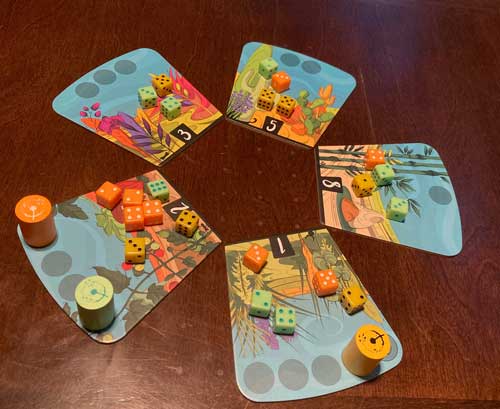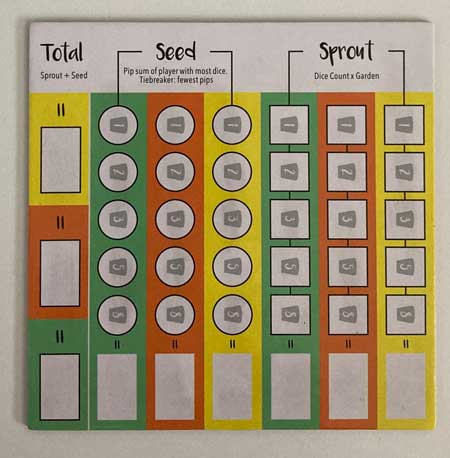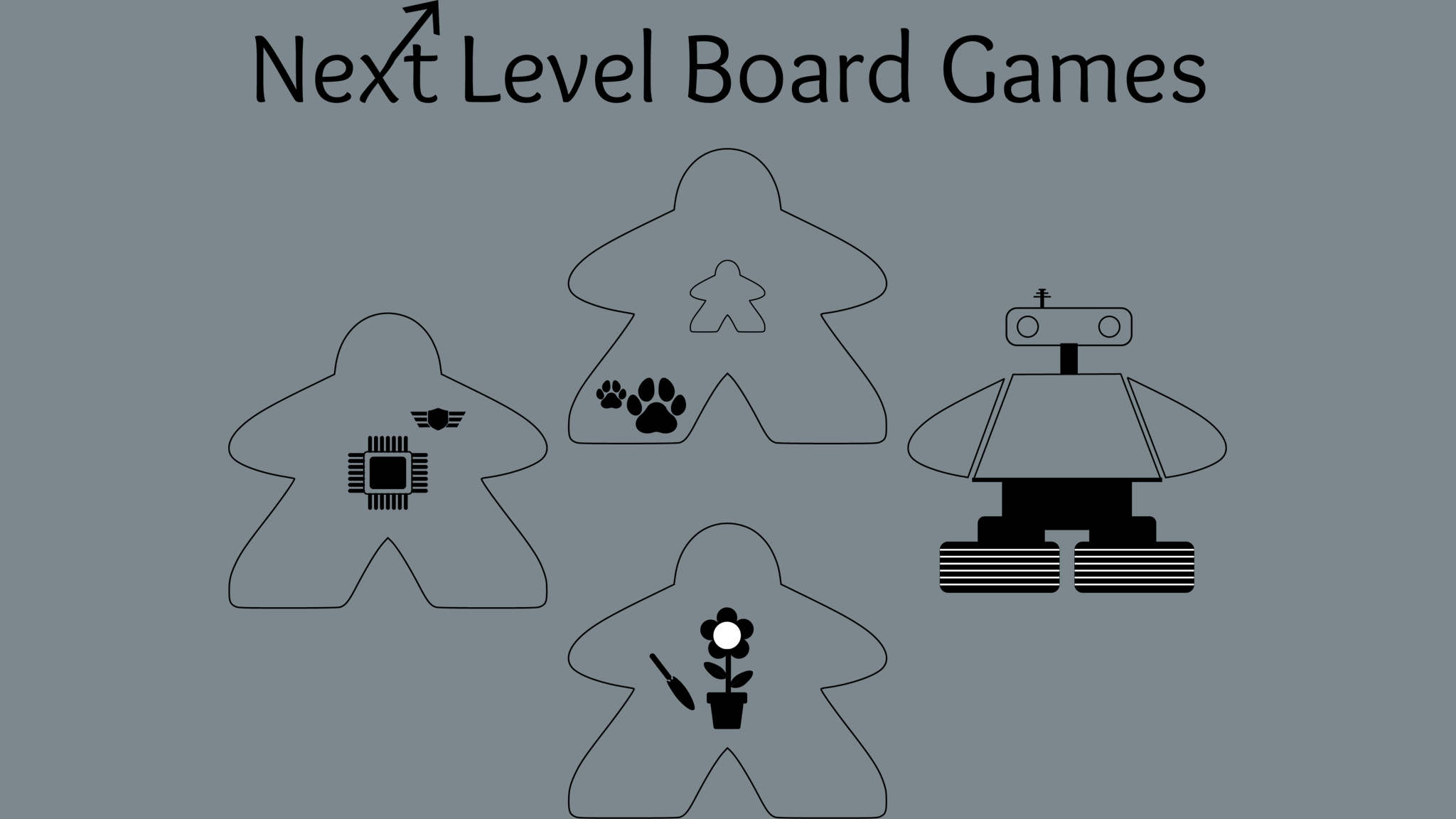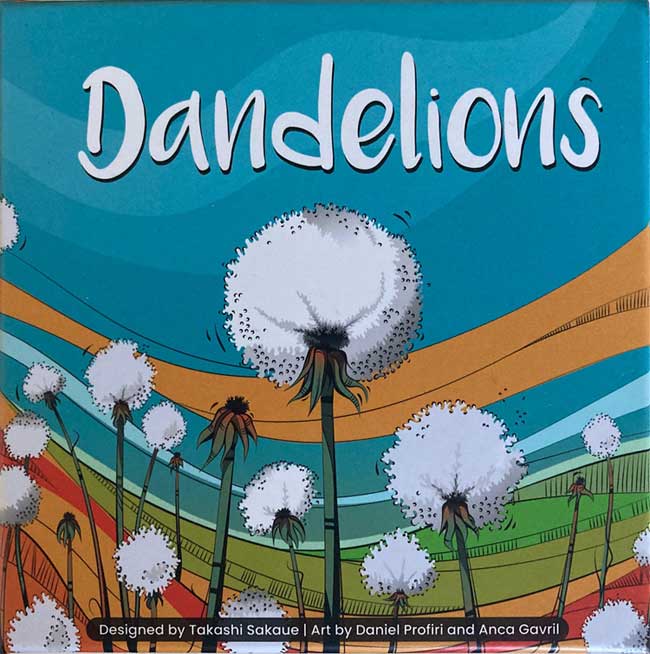Dandelions is a game published by Board Game Tables. The premise of this game is for players to take on the roll of dandelions floating in the wind. Players use dice to move their dandelions around the garden tiles. Players score points at the end of the game based on their number of dice on each level of garden tile in addition to the total pips on the dice for the player who has the most dice on each garden tile. The player with the highest combined score is declared the winner.
To see what is included in this game, watch our unboxing video:
This post is broken into the following 3 sections, feel free to jump directly to one:
- General summary - consisting of information about overall enjoyment, theme, replayability, and upgrades
- Complexity - consisting of information about the rulebook, setup, player turns, and overall learning curve
- Player turns - consisting of game type, game flow, rule you are likely to miss, and favorite aspect
General Summary
Number of players we had: 3 (the max for this game)
Our play time (not including setup): 20 minutes
Table size needed: Small (1-3')
Overall enjoyment

Dandelions is a game driven by dice movement. An interesting aspect of this game is that each player rolls all their dice at once at the start of the game and those results are what they have to work with the entire game. The only way to change this is to land their dandelion on the starting space, in which case they will re-roll all of their remaining dice, not just those they would like to change. This is a risk though since players have no idea what they will roll.
A few of the best aspects of this game are how simple the rules are, how quick it is to learn, and how there is a decent amount of strategy for such a small game. On your turn you move your dandelion token around the available spaces on the garden tiles based on the die you choose that turn. If you manage to end your turn on a space inhabited by another player's dandelion, you get to take the same number of movements again.
Another interesting action happens when you place the die you used for movement onto the garden tile where your dandelion token lands. If any other player has dice there with the same number as the number you are depositing, you move those dice to either one of the adjacent garden tiles.
Moving player dice this way has a number of effects on the game. First, it may change the player who has the area majority of the tile where you ended your turn. Second, it may change the player who has the area majority on the tile where you moved other player's dice. All dice on garden tiles earn players points at the end of the game. For example, having a die on the 5 garden tile gets a player five points at the end of the game. If another player bumps this die to the "3" tile, that die just lost a value of two for end-of-game scoring.
If we had to pick something we dislike about this game it would be that it has a maximum of three players. While we are not against games with lower player numbers, because this game is so portable and quick to learn, we wish it supported more players.
Theme

The theme of this game is flowers and gardens.
Replayability

One of the things that makes this game replayable is how compact it is. The game and all components fit within a box that is about 6"X 6". Additionally, the dice rolled by each player are going to be very different each game. This makes each game different as having the right numbers on dice at the right time make all the difference in having the opportunity to take advantage of bonus moves or landing on higher-level garden tiles.
Upgrades
I am not aware of any upgrades for this game.
Complexity
Rule book
The rule book is a small 4-sided sheet with examples of the rules, is organized, and easy to understand.
Setup
Setting up a game takes less than 5 minutes. Each player picks a color, takes the matching colored dice, the garden cards are arranged in the middle of the space, players place their dandelions on the first garden tile in player order and you are ready to begin.
Turns
On their turns, players choose one of their already rolled dice and use it to move their dandelion that number of spaces along the garden tiles. The number you choose will be based on where other dandelions are and what garden tile you hope to land on. The higher the number on the garden tile, the more each dice on that tile will be worth at the end of the game. However, dice can be bumped at any time on another player's turn, so players never know if their dice will remain where they place them.

Overall learning curve
The learning curve of this game is very low. Dandelions is easy to learn and teach in addition to being a great game to travel with or introduce to new players.
Player Turns
Play type
Dandelions is a dice driven game that also incorporates area majority. There is some strategy in the fact that players score points in one of two ways:
- The number of the garden tile times the number of dice each player has on the tile at the end of the game, regardless of the pips on those dice.
- The total of all pips on a player's dice if they are the player with the most dice on a garden tile.
Game flow
The flow of this game is very quick, we can play a game within twenty minutes and we often fall into the category of overthinking a game. We like the different bonus actions, like double movements, because it means you cannot predict where other player's dandelions will be when your turn comes back around. This means each player is engaged at all times.
Rule you are likely to forget/miss
The only rule any of our players forgot was to place their die once their dandelion was placed on a garden tile. This was more likely to happen when taking a double movement after initially landing on another player's dandelion.
Favorite aspect
Our favorite aspect of this game is how quick and easy it is to set up, put away, and play, all while having some unpredictability in the dice usage. The small and compact footprint and erasable score card are also big plusses!



